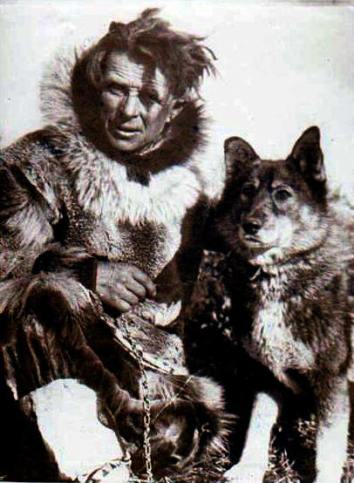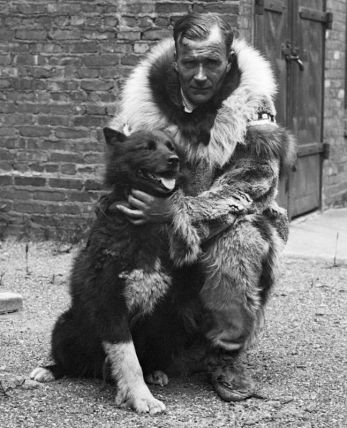 Diphtheria is a highly contagious infection caused by the bacterium Corynebacterium diphtheriae, with early symptoms resembling a cold or flu. Fever, sore throat, and chills lead to bluish skin coloration, painful swallowing, and difficulty breathing.
Diphtheria is a highly contagious infection caused by the bacterium Corynebacterium diphtheriae, with early symptoms resembling a cold or flu. Fever, sore throat, and chills lead to bluish skin coloration, painful swallowing, and difficulty breathing.
Later symptoms include cardiac arrhythmia with cranial and peripheral nerve palsies, as proteins form a leathery, white “pseudo membrane” on the throat and nasal tissues.
The disease is all but eradicated today in the United States, but diphtheria was once a major killer of children.
Spain experienced an outbreak of the condition in 1613. The year is remembered to this day, as “El Año de los Garotillos”. The Year of Strangulations.
A severe outbreak swept through New England in 1735. In one New Hampshire town, one of every three children under the age of 10 died of the disease. In some cases entire families were wiped out. Noah Webster described the outbreak, saying “It was literally the plague among children. Many families lost three of four children—many lost all”.
Dr. Curtis Welch practiced medicine in Nome, Alaska, in 1925. Several children became ill with what he first diagnosed as tonsillitis. More came down with sore throats, early sufferers beginning to die as Welch observed the white pseudo membrane of diphtheria. He had ordered fresh antitoxin the year before, but the shipment hadn’t arrived by the time the ports froze over. By January, all the serum in Nome was expired.

There were 10,000 living in and around Nome at the time, 2° south of the Arctic Circle. Welch expected a high mortality rate among the 3,000 or so white inhabitants, but the 7,000 area natives: Central Yupik, Inupiaq, St. Lawrence Island Yupik and American Indians with lineage tied to tribes in the Lower 48, had no immunity whatsoever. Mortality among these populations could be expected to approach 100%.
Five children had already died by January 25, while Dr. Welch suspected more in the remote native camps. A telegram went out and an Anchorage hospital came up with 300,204 units of serum. Enough for 30 patients. A million units would be needed but this might be enough to stave off an epidemic until the larger shipment arrived, in February.
The 300,000 units shipped as far as they could by rail, arriving at Nenana, 674 miles from Nome. Three vintage biplanes were available, but all were in pieces, and none would start in the sub-arctic cold. The antitoxin would have to go the rest of the way, by dog sled.
It was 9:00pm and −50°F on January 27, when “Wild Bill” Shannon and his nine dog team received the 20-pound cylinder of serum. The temperature was −62°F when Shannon reached Minto at 3:00am, hypothermic, with parts of his face blackened by frostbite.
 Leonhard Seppala and his dog team took their turn, departing in the face of gale force winds and zero visibility, with a wind chill of −85°F.
Leonhard Seppala and his dog team took their turn, departing in the face of gale force winds and zero visibility, with a wind chill of −85°F.
Most sled dogs are retired by age twelve, especially team leaders, but Seppala trusted twelve-year-old “Togo” with the lead. Up the 5,000-foot “Little McKinley” and across the unstable ice of Norton Sound, visibility was so poor that Seppala couldn’t see the “wheel dog” – the dog nearest his sled. Much of the time, navigation in that frozen wilderness was entirely up to his lead dog.

With Seppala’s 8-year-old daughter and only child Sigrid at risk for the disease, stakes could not have been higher. Seppala and Togo ran a round-trip of 261 miles to make the next handoff on February 1, including 91 miles with the serum capsule.
Together the pair had covered twice as much ground as any other team, over the most dangerous terrain of the “serum run”.
Gunnar Kaasen and his team took the handoff, hitting the trail at 10:00 at night. At one point, hurricane force winds upended the sled, pitching musher and serum alike into the snow. Already frostbitten, Kaasen searched in the dark with bare hands, until he found the cylinder. Covering the last 53 miles overnight, the team reached Front Street, Nome, at 5:30am on February 2. The serum was thawed and ready by noon.
20 mushers and 150+ dogs had covered 674 miles in 5 days, 7½ hours, a distance that normally took the mail relay 2-3 weeks. Not a single serum ampule was broken.

With 28 confirmed cases and enough serum for 30, the “Great Race of Mercy” had held the death toll at 5, 6 or 7, depending on which version you accept. Doctor Welch suspected as many as 100 or more deaths in the native camps, but the real number will never be known. An untold number of dogs died before completing the run. Several mushers were severely frostbitten.
Gunnar Kaasen and his lead dog “Balto” were hailed as heroes of the serum run, becoming the most popular canine celebrity in the country after Rin Tin Tin.
It was a source of considerable bitterness for Leonhard Seppala, who felt that Kaasen’s 53-mile run was nothing compared with his own 91, Kaasen’s lead dog little more than a “freight dog”.
A statue of Balto was erected in New York’s Central Park in 1925 where it stands to this day, though he is depicted wearing Togo’s “colors” (awards). Togo lived another four years, though he was never again able to run. He spent his last years in Poland Spring, Maine, and passed away on December 5, 1929 at the ripe old age of 16.
 Seppala was in his old age in 1960, when he recalled “I never had a better dog than Togo. His stamina, loyalty and intelligence could not be improved upon. Togo was the best dog that ever traveled the Alaska trail.”
Seppala was in his old age in 1960, when he recalled “I never had a better dog than Togo. His stamina, loyalty and intelligence could not be improved upon. Togo was the best dog that ever traveled the Alaska trail.”
A month ago, near-100 years after serum run, Disney Film Productions released the film Togo, starring Willem Dafoe as Leonhard Seppala and “Diesel” as Togo, telling the story of two heroes of the serum run, of 1925.
Togo himself is stuffed and mounted, standing watch over the Iditarod museum headquarters in Wasilla, Alaska.



You must be logged in to post a comment.